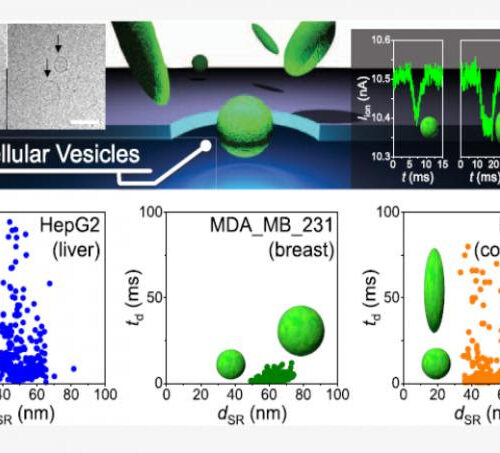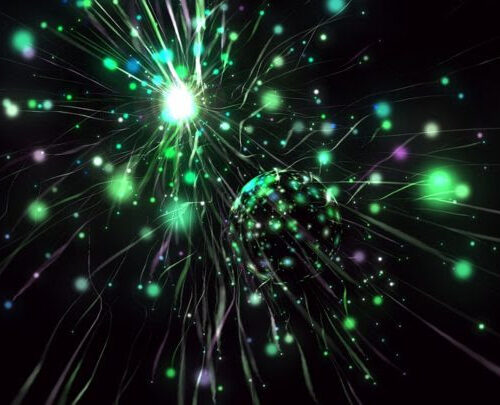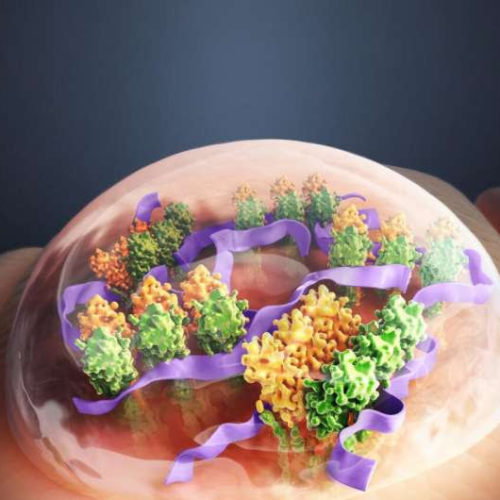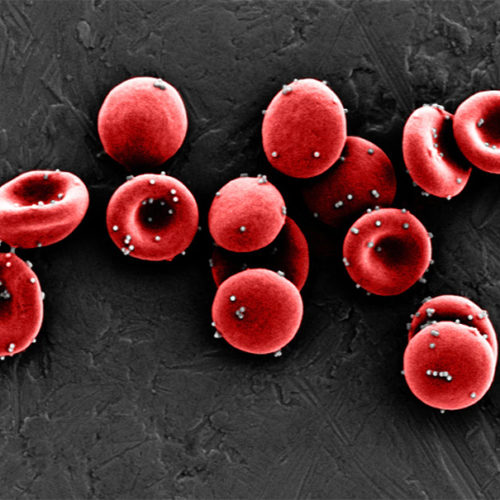NAGOYA UNIVERSITY IMAGE: Low-aspect-ratio nanopore devices can rapidly analyze the shapes of extracellular vesicles (EVs) individually in solution, and the present results reveal a dependence of EV shape distribution on the type of cells (cultured liver, breast, and colorectal cancer cells and cultured normal breast cells) secreting EVs. CREDIT: SOU RYUZAKI A recent study by...
Tag: <span>nanoparticles</span>
Gene-Silencing Nanoparticles to Treat COVID-19
MAY 19TH, 2021 CONN HASTINGS Researchers at City of Hope, a research center based in California, and Griffith University in Australia have collaborated to create a new experimental anti-viral therapy that can treat COVID-19. The therapeutic consists of small interfering RNA (siRNA) molecules encapsulated within lipid nanoparticles. When delivered into the bloodstream, the nanoparticles travel to the lungs. There,...
ITMO Researchers’ Light-Controlled Nanoparticles Will Play Key Role in Biosensor Development
Scientists from ITMO University have developed a production method for biointegrable nanoparticles that can be controlled via heat. With light irradiation, these particles change not only their shape, but their color, too. This discovery will be beneficial to the development of non-invasive biosensors, signal systems, and non-toxic dyes. The results of the study were published in the...
Nanoparticles enable efficient delivery of antimicrobial peptides
COMPUSCRIPT LTD Announcing a new article publication for BIO Integration journal. In this review article the authors Yingxue Deng, Rui Huang, Songyin Huang and Menghua Xiong from South China University of Technology, Guangzhou, Guangdong, P. R. China and Sun Yat-sen University, Guangzhou, Guangdong, P. R. China discuss how nanoparticles enable efficient delivery of antimicrobial peptides for the...
Nanoparticles delivery offers hope to those with peripheral artery disease
A University of Texas at Arlington bioengineer is designing a nanoparticle delivery system that will take needed plasmids to arteries in patients who are suffering from peripheral artery disease (PAD) in their arms and legs. A plasmid is a genetic structure in a cell that can replicate independently of chromosomes and often is used in...
‘STING’-ing tumors with nanoparticles
by UT Southwestern Medical Center Artist’s rendering shows a synthetic polymer (purple) that activates STING proteins (yellow and green motifs) for cancer immunotherapy. Credit: ShenyangZhiyan Science and Technology Co. Ltd. A new nanoparticle-based drug can boost the body’s innate immune system and make it more effective at fighting off tumors, researchers at UT Southwestern have shown. Their study,...
Nanotechnology — nanoparticles as weapons against cancer
LUDWIG-MAXIMILIANS-UNIVERSITÄT MÜNCHEN Many chemotherapeutic agents used to treat cancers are associated with side-effects of varying severity, because they are toxic to normal cells as well as malignant tumors. This has motivated the search for effective alternatives to the synthetic pharmaceuticals with which most cancers are currently treated. The use of calcium phosphate and citrate for...
Red Blood Cells Deliver Nanoparticles to Provoke Immune Response to Lung Metastases
Researchers at Harvard’s Wyss Institute have developed a way to deliver immune-stimulating agents to lung metastases. Their system involves nanoparticles loaded with an immune-stimulating agent that are attached to red blood cells. When injected into the blood stream, the red blood cells shed the nanoparticles as they squeeze through the narrow capillaries of the lungs, provoking...
Transforming coronavirus proteins into nanoparticles may hold the key to an effective COVID-19 vaccine
Changing makeup of a specific protein has the potential to neutralize the virus. Researchers from McGill University are part of an international team led by the University of Buffalo, which has discovered a technique that could help increase the effectiveness of vaccines against SARS-CoV-2, the virus that causes COVID-19. The group’s study was published recently online...
Nanoparticles can turn off genes in bone marrow cells
Using specialized nanoparticles, MIT engineers have developed a way to turn off specific genes in cells of the bone marrow, which play an important role in producing blood cells. These particles could be tailored to help treat heart disease or to boost the yield of stem cells in patients who need stem cell transplants, the researchers say....







